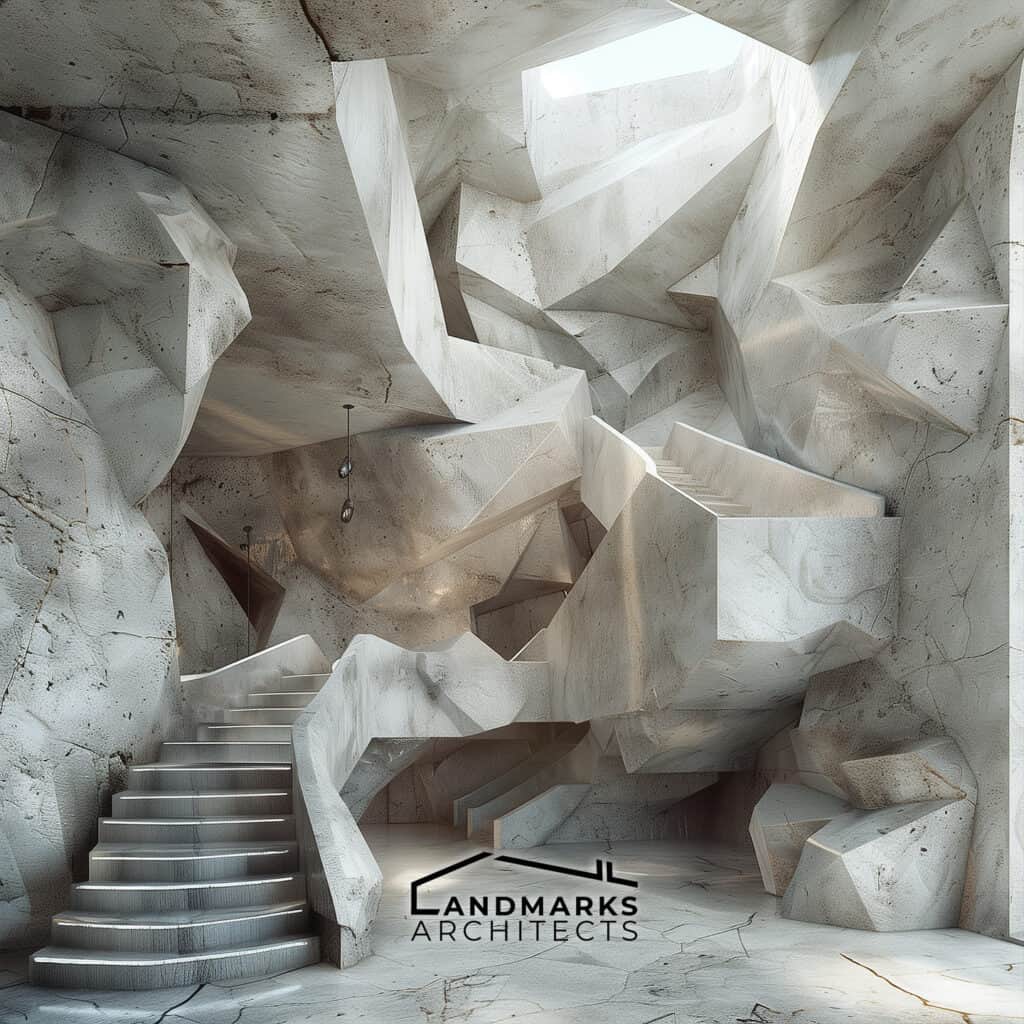
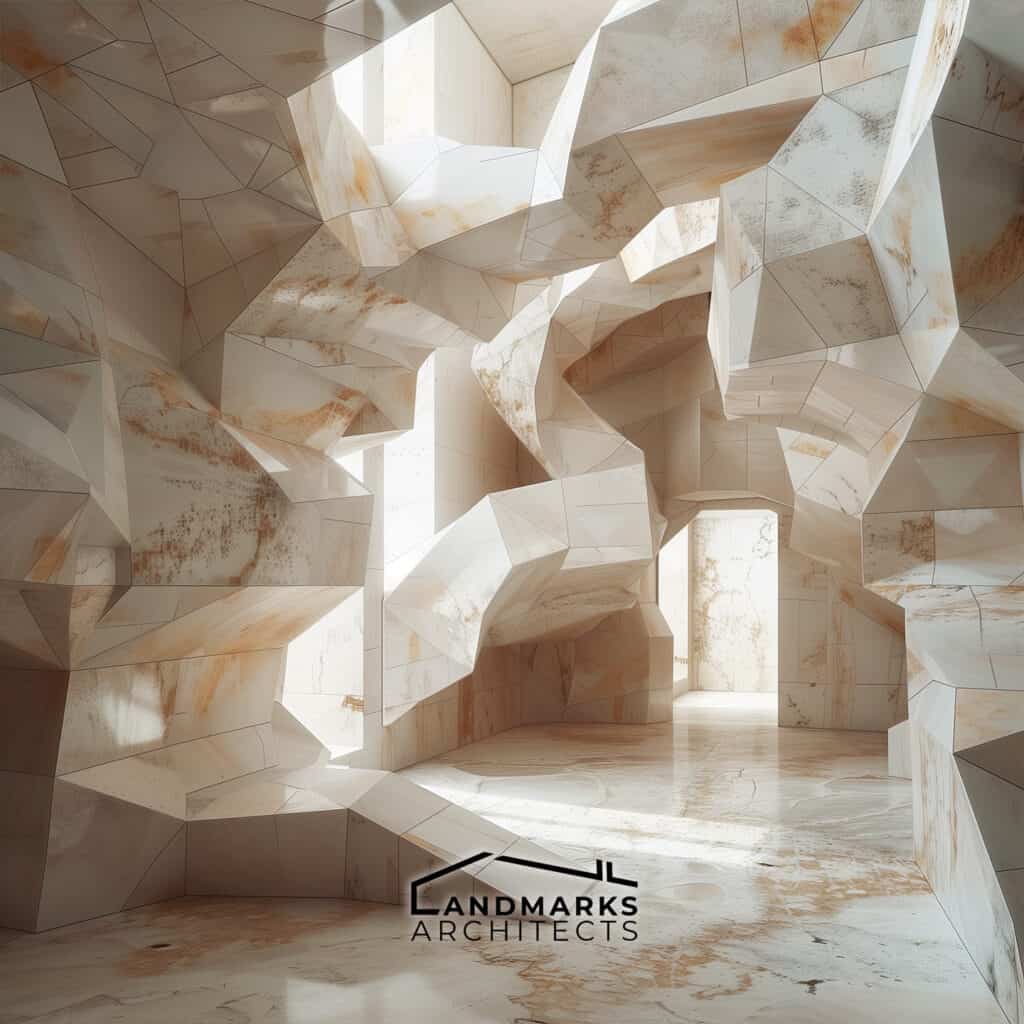
Are you curious about the key differences between Postmodernism and Deconstructivism in architecture?
At Landmarks Architects, we understand the desire for innovation in architecture. As an architect or design enthusiast, understanding these two influential movements, both deeply connected to modern art, can help you push the boundaries of traditional architectural norms and explore new creative possibilities.
We’ll explore:
- The philosophical underpinnings of Postmodernism and Deconstructivism
- How these movements diverge in their application and design elements
- Key architectural goals of each style, and how they challenge the norms of modern architecture
Ready to redefine the boundaries of architecture and embrace innovative design?


What is Postmodernism in Architecture?

Postmodernism emerged as a reaction to the principles of Modernism in architecture, rejecting its focus on mass production and minimalist simplicity. Instead, it embraced complexity, formal play, and diverse interpretations of space, drawing on modern art’s visual language to reflect societal narratives.

Philosophically, Postmodernism challenges grand narratives and authority, promoting multiple perspectives and eclectic design.
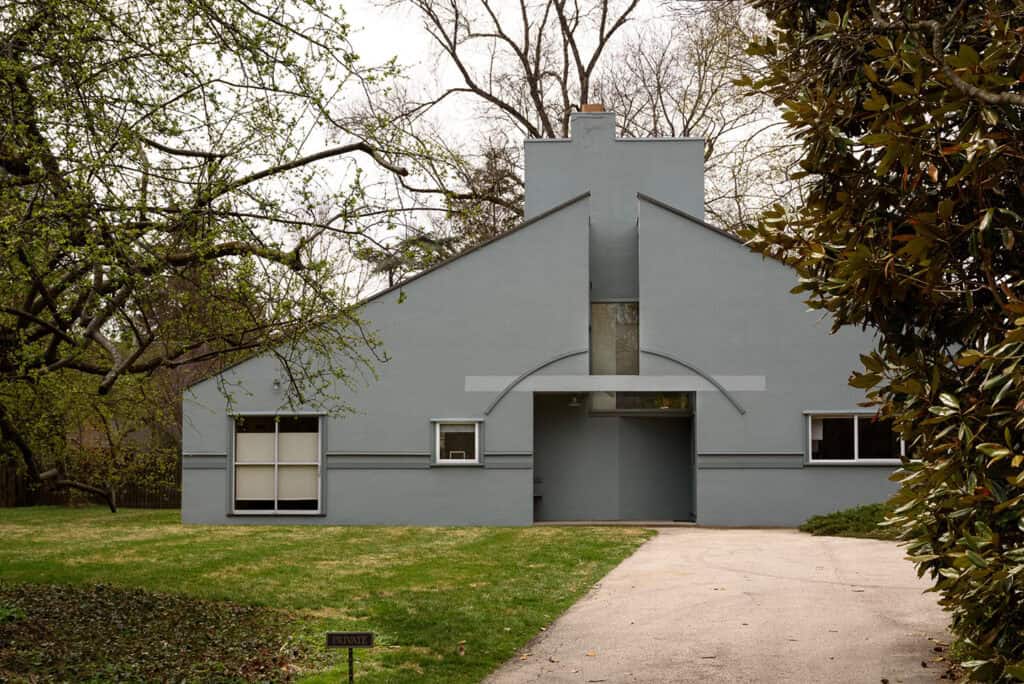

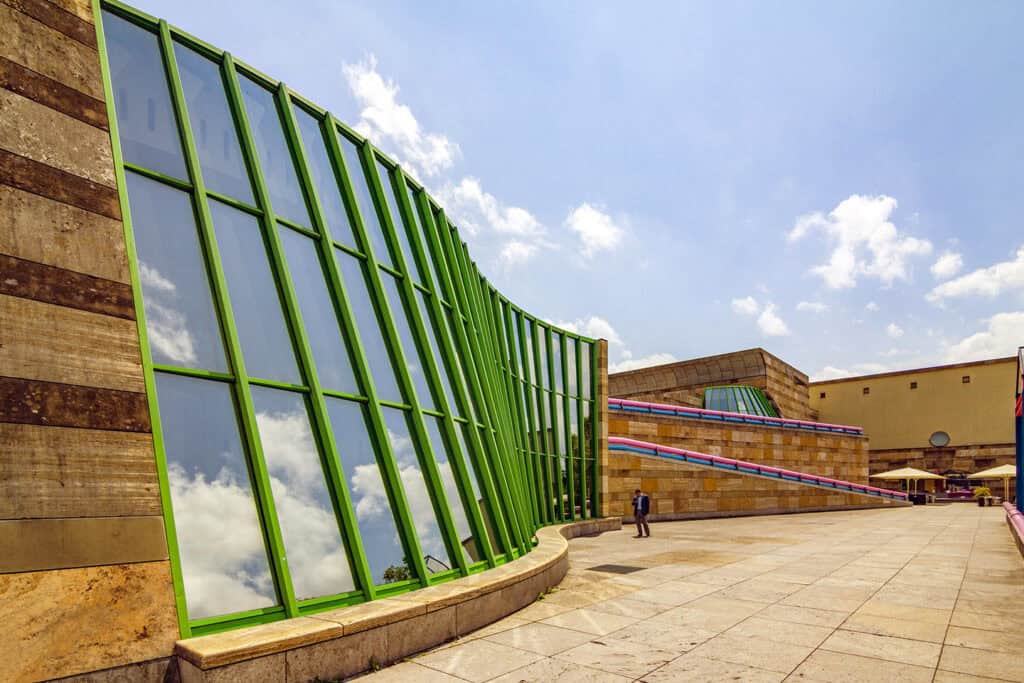
A key feature is the “decorated shed,” a concept by Robert Venturi and Denise Scott Brown, which emphasizes symbolic decoration in contrast to the functionalist simplicity of Modernist architecture.
What is Deconstructivism in Architecture?

Deconstructivism, a late 20th-century architectural movement, is rooted in Derridean deconstruction and post-structuralism. Drawing inspiration from Jacques Derrida, it focuses on fragmentation and controlled chaos, disrupting the harmonious forms often found in modernism.
This approach is reflected in a constructed building that challenges traditional architectural conventions.
Derrida presents the idea that meanings are not fixed, which informs deconstructivist architecture. In this approach, surface skins and visual appearances are deconstructed to uncover new interpretations.
Key characteristics include:
- Unpredictability: Deconstructivist designs often appear chaotic and irregular, defying traditional geometric forms.
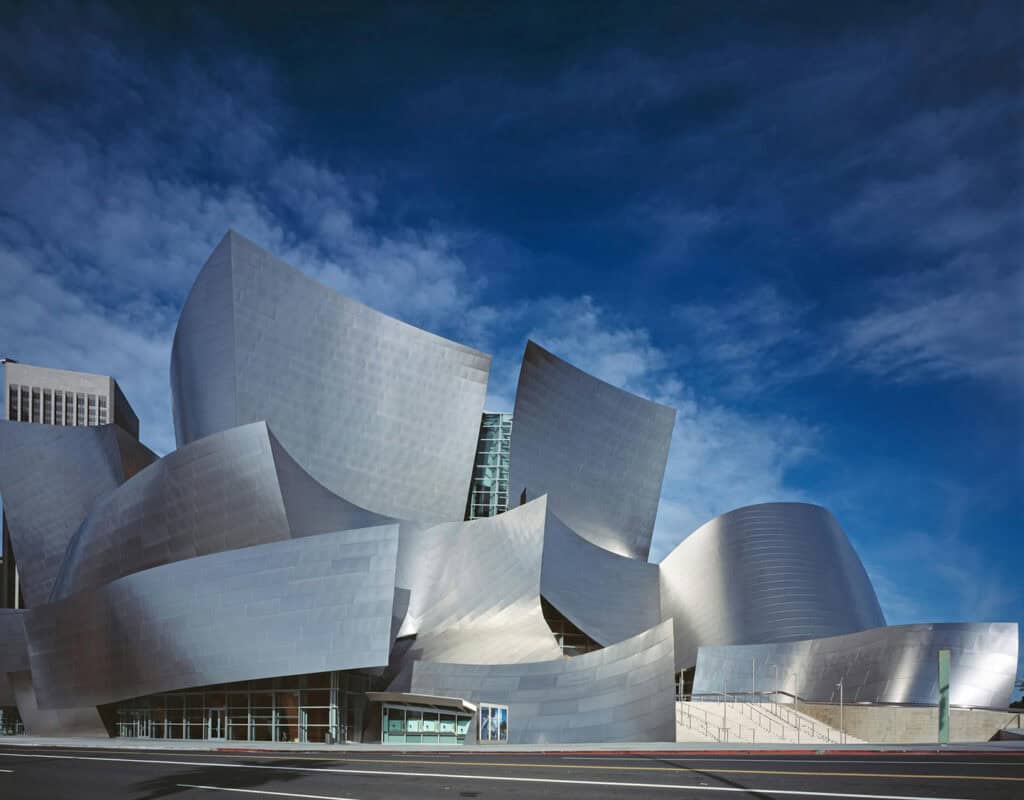
- Distortion: Buildings may feature angular, non-linear shapes that evoke a sense of movement and change.
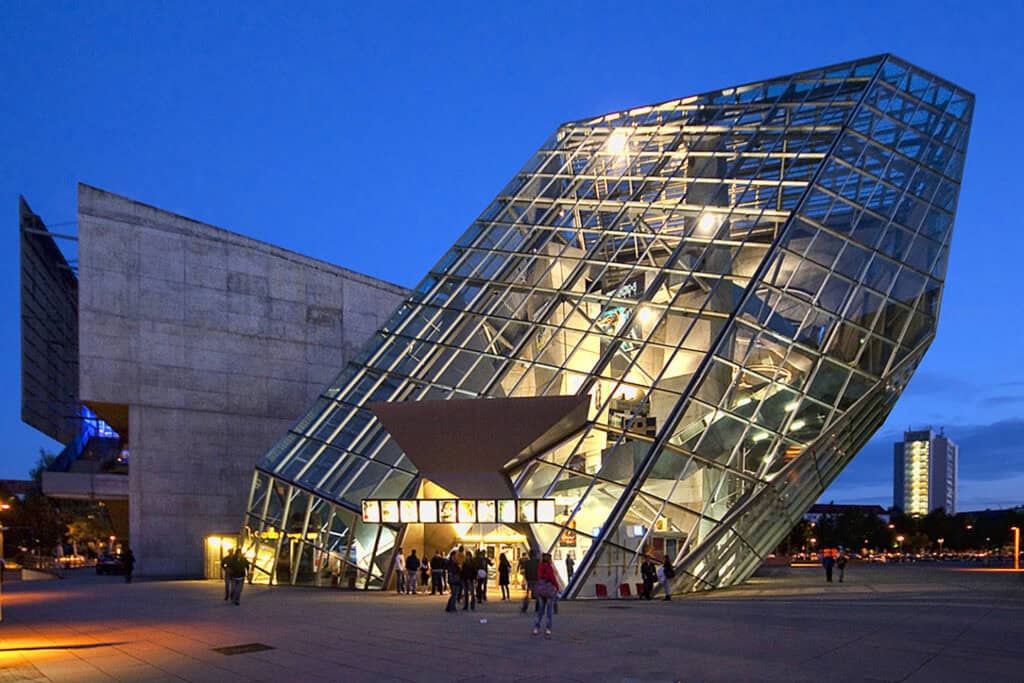
- Complexity: This architecture embraces intricate relationships between forms, creating a dialogue between opposing elements.
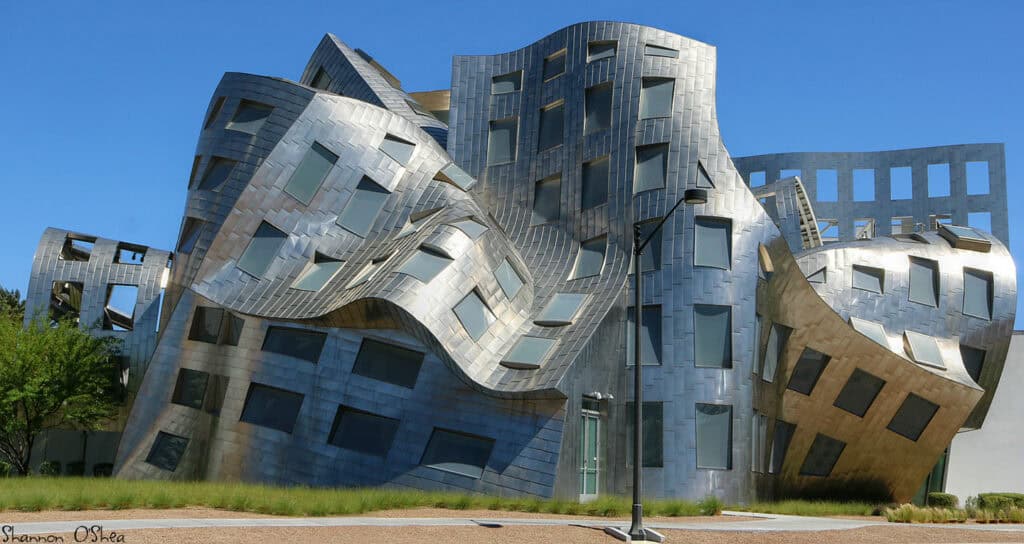
Prominent figures include Frank Gehry, Zaha Hadid, Peter Eisenman, and Daniel Libeskind, known for their innovative, dynamic structures.
Comparing Postmodernism and Deconstructivism in Architecture
Philosophical Underpinnings

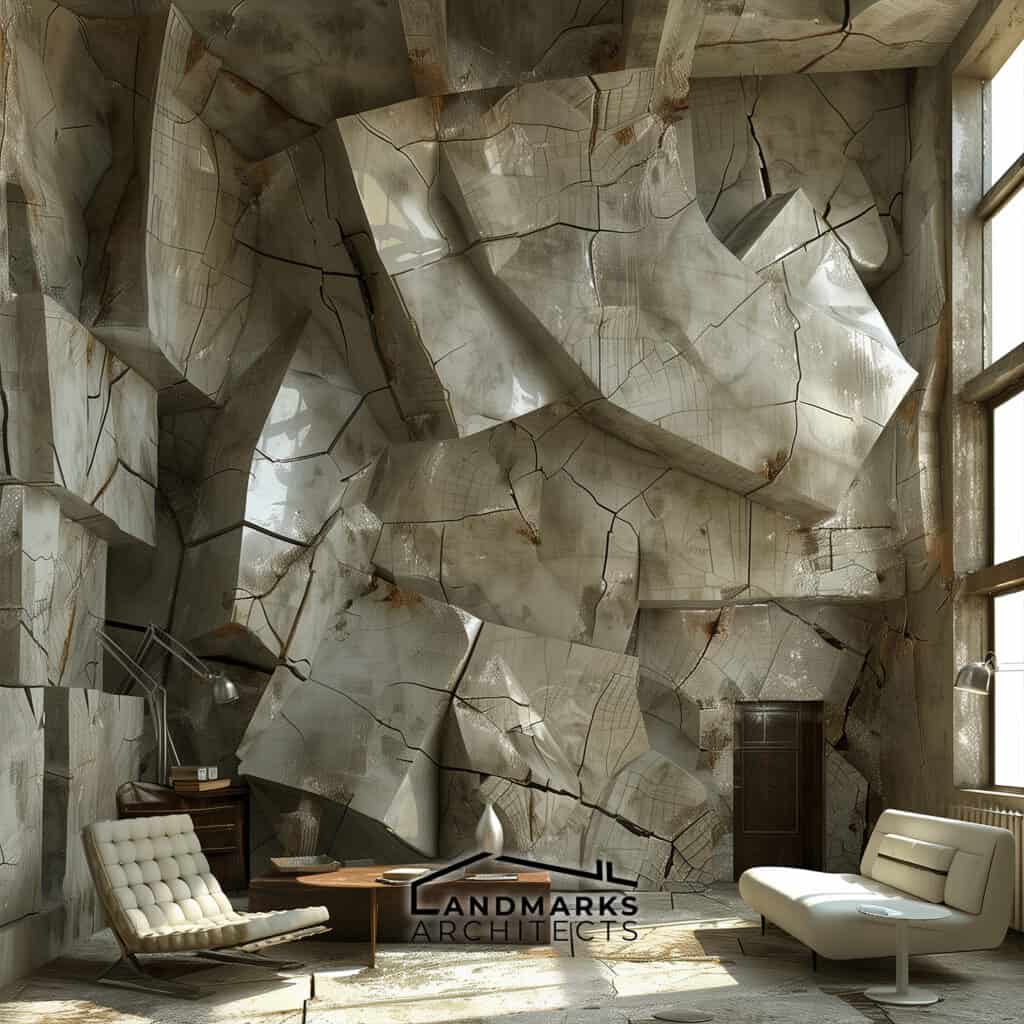
Postmodernism and Deconstructivism present distinct philosophical underpinnings. Postmodernism challenges grand narratives and embraces binary oppositions, reflecting a skepticism toward objective truth.
In contrast, Deconstructivism, influenced by Jacques Derrida’s ideas, focuses on deconstruction—an analysis that reveals the complexities and contradictions inherent in structures and language.
Architectural Expression

Architectural expression varies significantly between the two movements. Postmodern architects often favor an eclectic mix of styles, utilizing decorated sheds that emphasize ornamentation.
This contrasts with Deconstructivism’s emphasis on fragmentation and controlled chaos, where buildings may appear distorted and dynamic, showcasing their structure’s surface skin.
Postmodernism and Deconstructivism

Both movements emerged as responses to Modernism, but their critiques differ. Postmodernism addresses modernist simplicity and functionalism, advocating for cultural context and complexity.
Deconstructivism, however, dismantles the fixed meanings and geometric forms associated with modern architecture, seeking to introduce new meaning through chaotic, yet intentional, design elements.
Key Differences in Architecture
Postmodernism and Deconstructivism diverge significantly in their architectural approaches.
1. Philosophical Approach

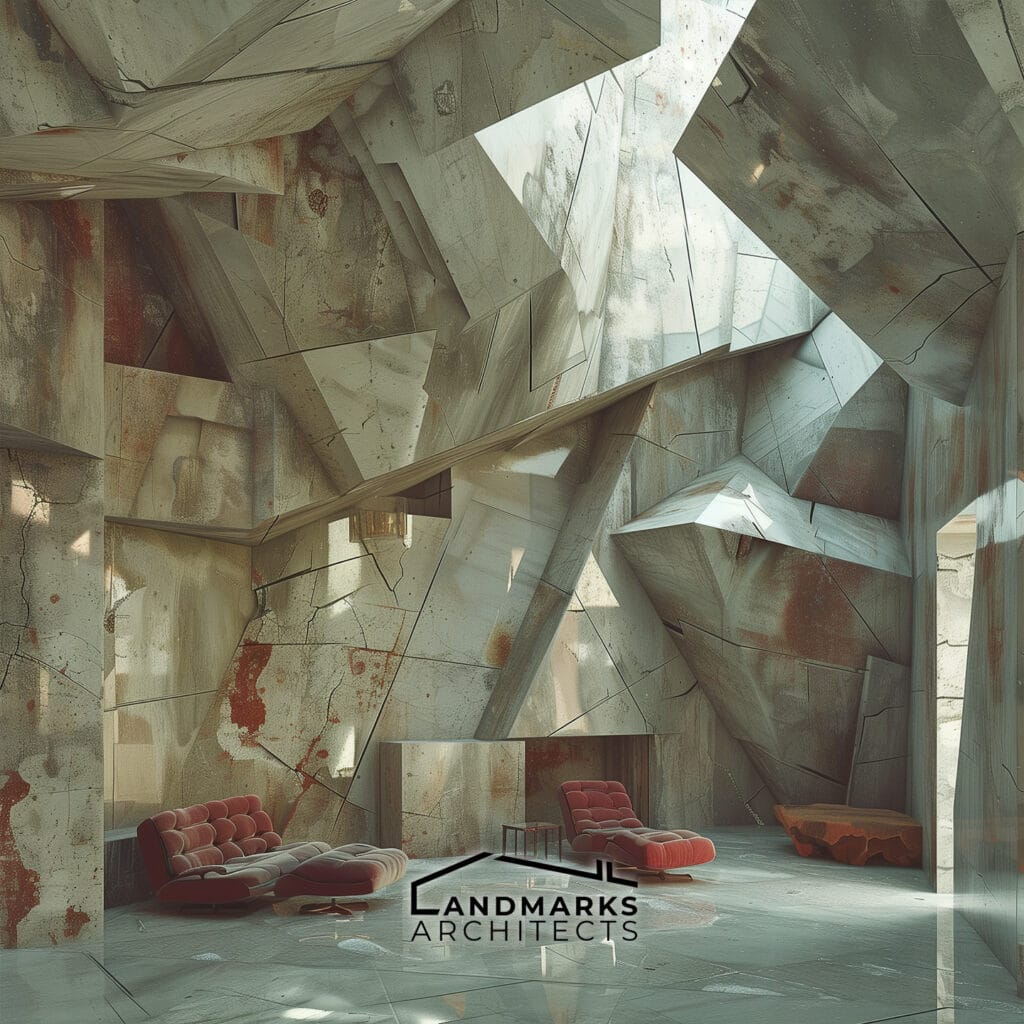
Postmodernism emphasizes pluralism and historical references. It reacts against modernist simplicity. In contrast, Deconstructivism explores philosophical ideas, notably Derrida’s notion of deconstruction and the concept of free play in form.
2. Application in Buildings


Postmodern architecture frequently incorporates the “decorated shed” concept, as proposed by Robert Venturi and Denise Scott Brown, which emphasizes decorative, symbolic elements over pure function.
Conversely, Deconstructivist architects focus on creating fragmented and disjointed buildings that challenge traditional aesthetics.
3. Architectural Goals


The goals of each movement reflect their underlying philosophies. Postmodernism aims for eclectic, meaningful structures, frequently using grand narratives and symbolism.
Deconstructivism, however, intends to unravel these meanings, producing works that disrupt established architectural conventions.
4. Design Elements


Postmodernism utilizes decorative aspects and familiar geometric forms. Deconstructivism explores controlled chaos, often resulting in unexpected forms and surface treatments.
The finished visual appearance in Deconstructivist designs tends to provoke thought rather than comfort.
5. Production Methods


While Postmodernism embraces mass production, it uses it to create eclectic, symbolic designs. Deconstructivism, however, often relies on advanced construction technologies and materials to achieve its fragmented, unique forms.
See also: What Are the 5 Major Trends in 21st Century Architecture?
What Are the Differences Between Postmodernism and Deconstructivism? A Recap

Postmodernism and deconstructivism represent pivotal shifts in architectural thought. Each movement reflects distinct philosophical underpinnings that challenge traditional norms.
Prominent architects like Frank Gehry, Zaha Hadid, Peter Eisenman, and Daniel Libeskind exemplify these movements. Gehry’s buildings showcase playful forms, embodying the postmodern spirit. In contrast, Eisenman’s structures often reflect a deconstructivist approach, inviting ambiguity.
As contemporary architecture continues to develop, the influence of postmodernism and deconstructivism persists. Modern architects draw inspiration from these philosophies, challenging previous notions of design and meaning. The dialogue between modern architectural styles and these movements remains crucial for future architectural innovation.
